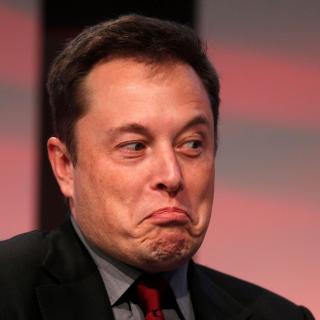
介绍:
Elon Musk’s empire
Countdown The entrepreneur’s finances are as jaw-dropping, inventive and combustible as his space rockets
Oct 22nd 2016 | NEW YORK | From the print edition
LIKE most technology tycoons, Elon Musk exudes disdain for finance. Convertible bonds and lease accounting are problems for Wall Street, while the visionaries in California focus on driverless cars and space travel. Yet while he might be loth to admit it, Mr Musk has become America’s most audacious corporate financier as well as its best-known entrepreneur. In just over a decade he has created an empire valued at a cool $44 billion despite its heavy losses (see chart). A blend of financial laboratory, corporate labyrinth and buttock-clenching thrill ride, Musk Inc has pushed the boundary of what was thought possible.
As has been the case for a decade, Mr Musk’s businesses face a difficult struggle to sustain their market valuations over the next 18 months, and to bolster confidence he is expected to unveil new financial measures and also new products over the next few weeks. Mr Musk has repeatedly defied the odds. But the stakes have got bigger now that shareholders, creditors and counterparties have tens of billions of dollars at risk. Tesla, an electric-car manufacturer, must ramp up production quickly and also meet the threat from new electric models designed by traditional car firms. Mr Musk wants to merge two of his firms, Tesla and SolarCity, a company which installs rooftop solar panels. Both firms burn up cash. He already has a place in American business history, but whether as a cautionary or inspiring tale will soon become clear.
As a child growing up in South Africa, Mr Musk would enter trances in which he could imagine complex computer systems. His business can be visualised as having four parts (see diagram). The biggest one is Tesla, which is publicly listed. SpaceX launches rockets for government and commercial clients and is financed by private investors. SolarCity is listed and struggling, so Tesla is trying to buy it in a backdoor bail-out. Lastly there is Mr Musk’s personal balance-sheet. It is rich in assets—his stakes in the firms are worth $13 billion—but he has little cash on hand.
In total Musk Inc has perhaps $8 billion of sales, and is set to burn $2.3 billion of cash during 2016. Its structure developed in a haphazard fashion. It includes both public and private firms, reflecting the fact that Tesla and SolarCity floated before the craze for so-called unicorns, or technology firms such as Uber that rely on private investors. Musk Inc also carries echoes of Asian and Italian business federations, which pool resources and people: SolarCity uses batteries made by Tesla, for example, and SpaceX has made loans to SolarCity. Mr Musk is the chairman of all three firms, which share some directors. His cousins manage SolarCity. Fidelity, a big asset manager, owns large stakes in each of the trio.
Mr Musk dreams of populating Mars and of hyperloops that transport people in pods between Los Angeles and San Francisco in 35 minutes. But his financial objectives are probably identical to those of carpet or chewing-gum tycoons: to raise cash, to get a high valuation and to keep control.
Consider the ways in which Mr Musk drums up cash, first of all. He has raised an epic $6 billion of equity from investors, staff and even from Tesla’s competitors (for a while, Toyota and Daimler owned stakes in the carmaker). Musk Inc also owes about $6 billion of debt to bond investors and banks. But what sets it apart is the $7 billion of cash and revenue that it has squeezed from unconventional sources. That includes deposits from customers before their cars are delivered; asset-backed securities and special-purpose funding vehicles that raise funds against assets without guarantees from Mr Musk’s firms; emissions credits, loans from the government and deals under which leasing firms purchase cars in return for a guarantee that Tesla will buy them back. (Mr Musk’s firms dispute our total figure on their unconventional sources of funds).
大家还在听

